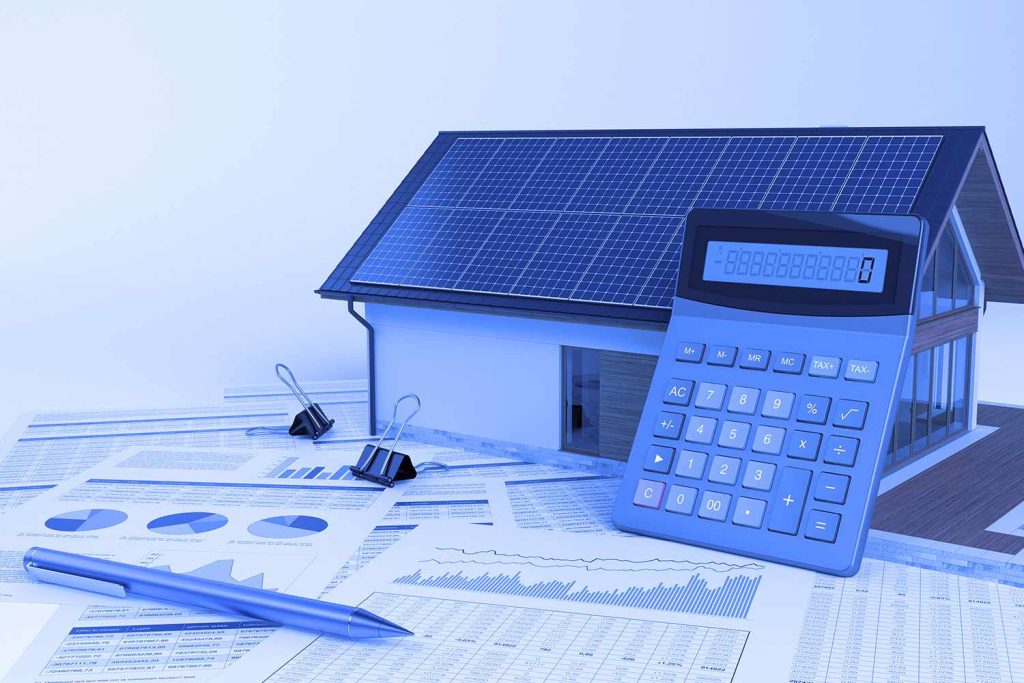The Bottom Line
SoFi or LightStream will be your best bet for a direct unsecured solar loan from an online lender thanks to their low rates and high borrowing limits. LightStream offers longer terms, while SoFi offers more benefits, such as a pre-qualification option and unemployment protection. If you have fair credit, Upgrade may be a better fit, especially considering the lender offers secured options. SunPower is another option for fair credit borrowers, but only if you’re looking to install a SunPower solar system. If you’d like to finance your solar installation through your contractor, Dividend offers the best rates, while GoodLeap is more widely available.
Guide to Choosing the Best Solar Panel Loan
Where to Get a Solar Loan
You can get a solar loan through your contractor or solar system provider, or you can apply directly for a solar loan from a bank, credit union, or online lender. Financing through your contractor or through SunPower will generally offer the lowest APRs and the longest terms. But if you want to choose a contractor that doesn’t offer financing, or if you want to use the loan money for other home improvement needs as well, consider credit unions and online lenders, both of which tend to offer lower rates than banks.
What Is a Solar Loan and How Do They Work?
A solar loan isn’t a type of loan, but rather a way to use a personal loan. Many personal loan lenders and point-of-sale financing providers offer personal loans that can be used to purchase and install solar panels. A personal loan provides you with a lump sum of money upfront in exchange for fixed monthly payments over time. You need to apply for a personal loan, and lenders approve you based on your credit score, income, and other factors.
Comparing Solar Loans
According to Investopedia’s 2023 Personal Loan Borrower survey, funding major home improvements was the second most common reason cited for getting a personal loan, only after debt consolidation.
When choosing a lender, you’ll want to weigh various pros and cons with each loan. Many borrowers favor loans with the lowest interest rate, which can save you money over time. But there are other factors to keep in mind as you compare loans:
- Availability: Make sure the lender offers loans in your state.
- Restrictions: Check that the loan can be used for solar panels.
- Requirements: Narrow down your options to lenders you’re eligible for based on your credit score, income, and debt-to-income ratio.
- Borrowing costs: Consider the interest rate along with origination fees. Compare the APR, which expresses the annual cost of borrowing as a percentage, across lenders. Pay attention to late payment fees and avoid lenders that charge prepayment penalties.
- Terms: Some lenders offer longer terms than others. Figure out the shortest term that has a monthly payment you can comfortably afford, and find a lender that offers that term or something close.
- Co-signers and co-applicants: If you intend to apply with help from a friend or family member who has good credit, narrow down your options to lenders that allow co-signers or co-borrowers.
How to Qualify For and Apply For a Solar Loan
To qualify for a personal loan, you’ll need:
- Fair credit: Most personal loan lenders require at least fair credit, while some require good or excellent credit. You’ll need a high credit score to get the lowest advertised rates. The lender will also check your payment history for missed or late payments.
- Sufficient income to cover your debts: Some lenders have minimum annual income requirements. Lenders will also check your existing debts to make sure you’re not overextended. Some may have a maximum debt-to-income ratio, which is the share of your income that you spend making your minimum monthly payments.
If you think you meet the general requirements, here’s how to apply:
- Pre-qualify. Get a few rate quotes from lenders that allow you to pre-qualify with a soft credit inquiry.
- Choose a loan offer. Choose the loan with the APR and term that best meet your needs.
- Formally apply. Accept the loan offer, which will trigger a hard credit check, and submit any additional required documentation.
- Sign your loan documents. If you’re approved, make sure the final APR offer is acceptable. Review your loan agreement carefully before signing.
- Receive the funds. Wait for the money to arrive in your bank account.
Alternatives to a Solar Loan
You have other ways to potentially finance solar panels if you don’t want to take out a personal loan. They include:
- Rebates and grants: If you meet the income limits, you may qualify for grants or rebates for solar panels from your state, city, or utility company. These can help you save money on your solar installation or cover the cost entirely. Research programs in your area.
- Solar leasing: Solar leasing has low upfront installation costs, but you’ll pay the company that owns and operates the equipment a monthly fee for a term that typically lasts 20 to 25 years. You won’t own the solar system like you would if you purchased it with a loan.
- Home equity loan: A home equity loan allows you to borrow against your home equity and receive the funds as a lump sum. The loan is secured by your home and typically repaid in fixed monthly payments over five to 30 years. Home equity loans tend to come with low APRs, but they also require you to pay closing costs.
- Home equity line of credit: A HELOC is a revolving line of credit, like a credit card, that allows you to tap your home equity up to a limit. You may pay upfront closing costs when opening the line, but then you can make multiple withdrawals during the draw period without reapplying. Most HELOCs have variable interest rates, and monthly payments are often low during the draw period. Like a home equity loan, a HELOC is secured by your home equity, and the lender can foreclose on your home if you default.
How Solar Panel Tax Credits Work
A tax credit reduces the amount you would otherwise owe in taxes for that year. For solar PV systems installed between 2022 and 2032, you’ll receive a federal tax credit equal to 30% of the cost of installing the equipment, after any utility rebates and before state rebates. For example, if you paid $24,000 for your system in 2023, you would owe $7,200 less in taxes for 2023. If you only owed $5,000 in taxes for 2023, you could carry over the remainder of the tax credit to 2024.
Other tax incentives may be available from your state or city, including sales tax exemptions. Rebates and grants may also be available from your city, state, or utility company.
Frequently Asked Questions
-
The average APR on a 24-month personal loan is 12.17%, according to the Federal Reserve. But you can get solar financing at a lower rate if you have excellent credit or get a loan through your contractor. Some point-of-sale financing providers may provide 0% APR financing to qualified borrowers.
-
That’s a personal decision that depends on your financial situation. If the money you save on your electric bills exceeds the cost of financing solar panels over time, it’s likely worth installing solar panels on your home. If mitigating climate change is important to you, it may be worth getting solar panels even if you can’t recoup the costs in savings. Remember that rebates and tax credits may be available to help with the cost.
You can use the National Utility Rate Database to estimate electricity costs in your area. However, no matter how much you may save in the long term, you should only take out a loan if you can afford to make the monthly payments.
-
Most solar loans will require a hard credit inquiry as part of the formal application. A hard inquiry will cause a slight negative impact to your credit score. However, you may see your credit score improve as you make on-time payments on your loan.
-
A solar loan is not a type of loan. It describes a specific use for a personal loan. Essentially, a solar loan is a personal loan, which is a lump sum repaid with fixed payments that include interest, used to purchase solar panels. A solar loan may also refer to other types of solar financing.
-
Some personal loan lenders offer home improvement loans for solar panels with terms of up to 12 years. Solar contractor financing may come with longer terms, such as 15 or 25 years. Choosing a shorter term will save you money on interest. Just make sure you can afford the monthly payments.
Methodology
To evaluate and rank personal loan providers we collected hundreds of data points across 70 lenders, including traditional banks, credit unions, fintechs, and special interest finance companies. We researched and evaluated APRs, loan amounts and terms, fees, customer experience, and much more. To rank the lenders in our database and to generate star ratings, we weighted the data we collected, based in part on what consumers told us were the most important features of a personal loan and lender in a survey we conducted. We grouped those factors into four broad areas:
- Loan costs (advertised APR, fees, and six other factors): 29.25%
- Loan terms (loan amount, repayment term, and three other factors): 22.25%
- Borrowing requirements (credit score, membership requirement, and six other factors): 28.5%
- Additional features (online application, pre-qualification, and eight other factors): 20%
Learn more about how we evaluated personal loans in our complete methodology.
Read the full article here














